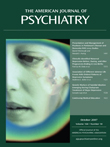“Until I’m 22,” she answered, an unexpected response. I had anticipated younger.
It was Halloween. In my private office, where I work 2 days a week, there were no decorations. Before psychiatry I had been a family physician and had always decorated my office in the spirit of the season. Many of my family practice patients were elderly; they seemed to enjoy the decor as they came in to check on their hypertension, their new hips, and their cancers. However, as a child and adolescent psychiatrist I have yet to decorate for Halloween—the festival of unfettered childhood, if any holiday is. The decision not to decorate is informed by my intention to provide an open, accommodating, and neutral therapeutic environment. I was taught in my training that it is the patient who brings the grist for the treating mill. By not decorating, I tell myself, I am trying (probably in vain) to avoid potentially “contaminating” the patient’s grist with mine.
I had booked the day lightly, noting that most patients did not want to come in on Halloween if they could help it, as there were costumes to ready and trick-or-treat routes to set out on. I myself had trick-or-treaters waiting at home. I wanted to see them get ready; this year they had decided to go to friends’ neighborhoods, where the odds favored a higher haul of treats than ours.
But Charlene had come in for a follow-up on Halloween. She was 17 years old and dressed for the night ahead as a funky urban hipster—a far cry from her usual baggy sweatpants and sweater. I wondered to myself whether she was going to a party, or maybe, just maybe, heading out for one last night of door-to-door trick-or-treating. I commented briefly on her costume and asked whether she had worn it to school that day. “Yes,” she said, “and I am going out tonight. We’ll probably go later, after the younger kids. That way we’ll get the last of the candy in everyone’s home. People will just empty the candy out to us if they don’t expect anyone to come later.” Her years of Halloween experience were shining through.
With younger teens, the question often arises as to when they will stop trick-or-treating and perhaps instead have parties at home with friends, usually still in costume. Mostly by around the age of 15 or 16, it is the parties that win out. I asked Charlene how long she would continue to go trick-or-treating. It was then that she answered, “Until I’m 22,” and her answer came quick as a flash. I had anticipated that she would have said something like, “This is the last year,” or “Maybe one more year.” But 22? Who says 22? Where did that come from, I wondered, as I went on with the appointment.
I had first seen Charlene a year ago. Her family physician had referred her for assessment and management of low mood, restlessness, and compulsive checking behavior. On interview, the predominant finding appeared to be one of many years of worry; the family wondered if this was perhaps related to her father’s long-standing struggle with chronic medical illness. I did not find that she had obsessive-compulsive disorder or a mood disorder. However, there was evidence upon evaluation to support diagnoses of specific phobia and social phobia, and possibly generalized anxiety disorder.
We began treatment. The initial focus was on cognitive behavior therapy. A “fear hierarchy” was constructed and graduated exposure was planned and carried out. Charlene was willing and compliant throughout the process. There was initial clinical improvement, but as she went further up the hierarchy, progress slowed and then reached a plateau. After the addition of a selective serotonin reuptake inhibitor (SSRI), progress picked up again. Within a few months Charlene had achieved symptomatic remission with cognitive behavior therapy combined with medication. Her appointments had recently become less frequent, and the focus now was on maintaining her therapeutic gains.
Today’s appointment, on Halloween, was part of what was becoming routine follow-up for her. She stated that she “felt great...can’t complain.” She was smiling and joking, and it was around then that I asked her about her costume. I checked on her symptoms; she was well and free of symptoms related to anxiety.
“You know, I’m really looking forward to going out tonight,” she said. “It’s been years since I last went. I used to be too afraid, too self-conscious. It was embarrassing. I couldn’t stand it.”
“When did you last go out?” I asked.
“When I was 12,” she replied.
I had not known the extent that anxiety had impacted Halloween for her. I realized how markedly disabled she had been—unable to participate in this particular celebration and indulgence of childhood. Time was running short, so we moved on to assigning some homework and renewing her prescription. We set the next appointment and I quickly moved on to my next patient.
Later, driving home, I found myself thinking about Charlene, and images of numbers floated across my mind’s eye. She was 17 and wanted to trick-or-treat until she was 22. She had last gone out when she was 12. She had not exactly said so, and I don’t know if she fully realized what she was telling me, but she had lost 5 years of untrammeled childhood fun to anxiety, and she had a plan (conscious or not) to make up for lost time.

